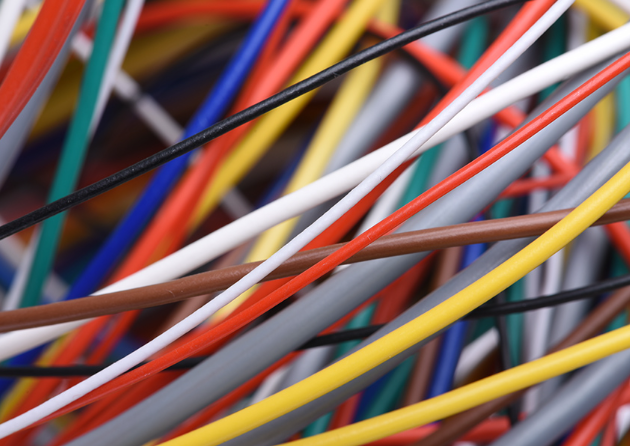OUTLINE:
How to Choose the Proper Size of Wire & Cable for Electrical Wiring Installation
 295
295Electrical wiring is a crucial component of any building, whether residential, commercial, or industrial. Choosing the right size of wire and cable is essential to ensure the safety and efficiency of your electrical system. Incorrectly sized wires can lead to overheating, voltage drop, and even electrical fires. In this article, we will explore the key factors to consider when determining the proper size of wire and cable for your electrical wiring installation.
Current Rating
One of the most critical factors in selecting the right wire size is the current rating, which is measured in amperes (A). To determine the appropriate wire size, you must first calculate the maximum current that will flow through the circuit. This can be done by adding up the current ratings of all the devices and appliances connected to the circuit. Once you have this value, select a wire size that can safely carry this current without overheating.
Voltage Drop
Voltage drop is another crucial consideration when sizing wires and cables. When current flows through a wire, it encounters resistance, which leads to a voltage drop. Excessive voltage drop can result in reduced equipment performance and may cause lights to dim. To calculate voltage drop, you'll need to consider the length of the wire, the current, and the wire's resistance. Different applications have specific voltage drop limits, so consult the National Electrical Code (NEC) or relevant local codes to determine the acceptable voltage drop for your installation.
Wire Type and Material
The type and material of the wire or cable also play a significant role in sizing. There are various types of wires, including copper and aluminum, each with its unique characteristics. Copper is the most commonly used conductor material due to its excellent conductivity and heat resistance. Aluminum, on the other hand, is often used in larger installations and is less expensive but requires a larger size due to its lower conductivity.
Additionally, you must consider the insulation type and temperature rating of the wire, which should meet the requirements of your specific application. For example, if the wire will be exposed to high temperatures or moisture, you may need a wire with special insulation properties.

Ambient Temperature
The ambient temperature of the installation environment is another factor to consider. In areas with extreme temperatures, wires may need to be sized larger to account for temperature-related changes in resistance. The NEC provides guidelines for adjusting wire sizes based on ambient temperature, so be sure to consult these standards when making your calculations.
Circuit Type
Different circuits, such as lighting circuits, receptacle circuits, and motor circuits, have varying requirements for wire size. Motor circuits, for instance, may require larger wires due to the inrush current that motors draw when starting. Refer to the NEC or relevant local codes to determine the specific requirements for each circuit type.
Conduit Fill
If you plan to install wires in conduit, it's essential to consider conduit fill. Conduit fill refers to the maximum number and size of wires that can fit inside a conduit while maintaining proper spacing and ventilation. Overfilling a conduit can lead to overheating and reduced wire performance. Consult the NEC or local codes to determine the acceptable conduit fill requirements for your installation.

Future Expansion
Lastly, it's wise to plan for future expansion when sizing wires and cables. Installing larger wires than currently needed can provide flexibility for future upgrades and additions to your electrical system, saving you time and money down the road.
Determining the proper size of wire and cable for your electrical wiring installation is a crucial step in ensuring a safe and efficient electrical system. Consider factors such as current rating, voltage drop, wire type and material, ambient temperature, circuit type, conduit fill, and future expansion when making your calculations. Always consult the National Electrical Code (NEC) or relevant local codes to ensure compliance with safety standards and regulations. Properly sized wires and cables are essential for the reliability and safety of your electrical system, so take the time to make accurate calculations and choose the right materials for your specific application.

Disclaimer: The views and opinions expressed by individual authors or forum participants on this website do not represent the views and opinions of Chipsmall, nor do they represent Chipsmall's official policy.

share this blog to:

